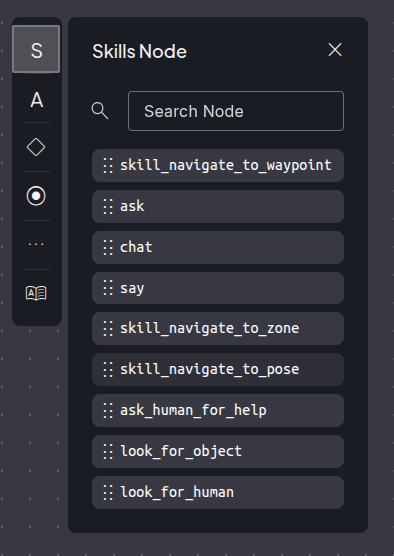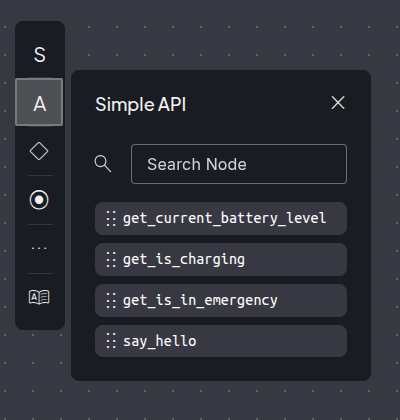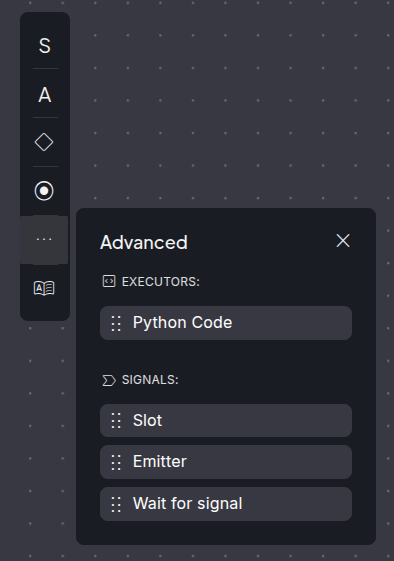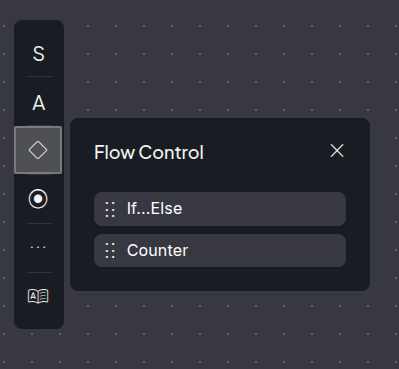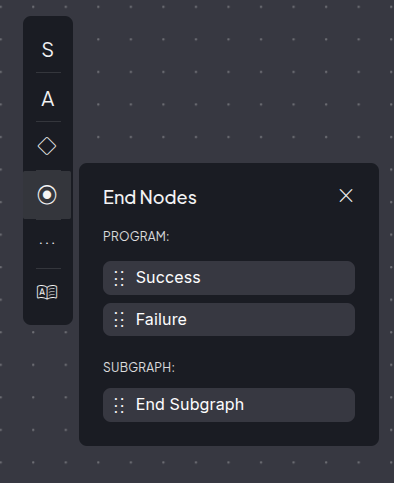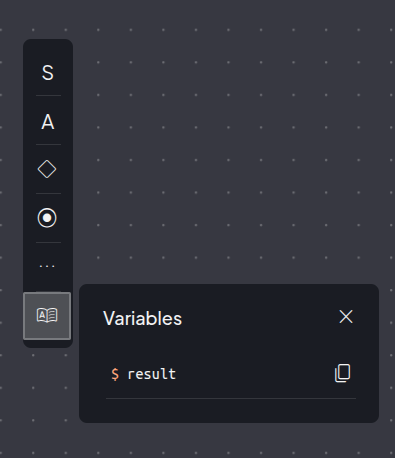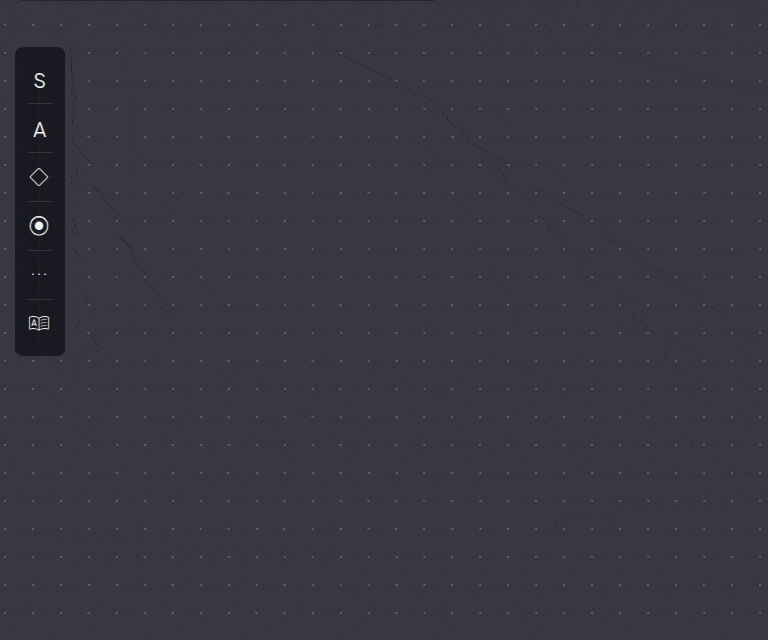Visual programming¶
Overview¶
The Visual Programming is a web based app used to create programs for the robot in a simple and user friendly way. It consists in creating graph structures to manage actions that need to happen in a specific order using nodes. Each node in the graph is an action with a unique ID and tells the system what to do next. For most nodes, error handling can be configured to either, do something in case of error, or ignore it.
The Visual Programming web app consists of a Start page, a list of previously created programs and ways to manage them, and an Editor page, where program graphs can be created or edited.
Start page¶
The visual programming home page displays a New Program button and a list of programs previously created.
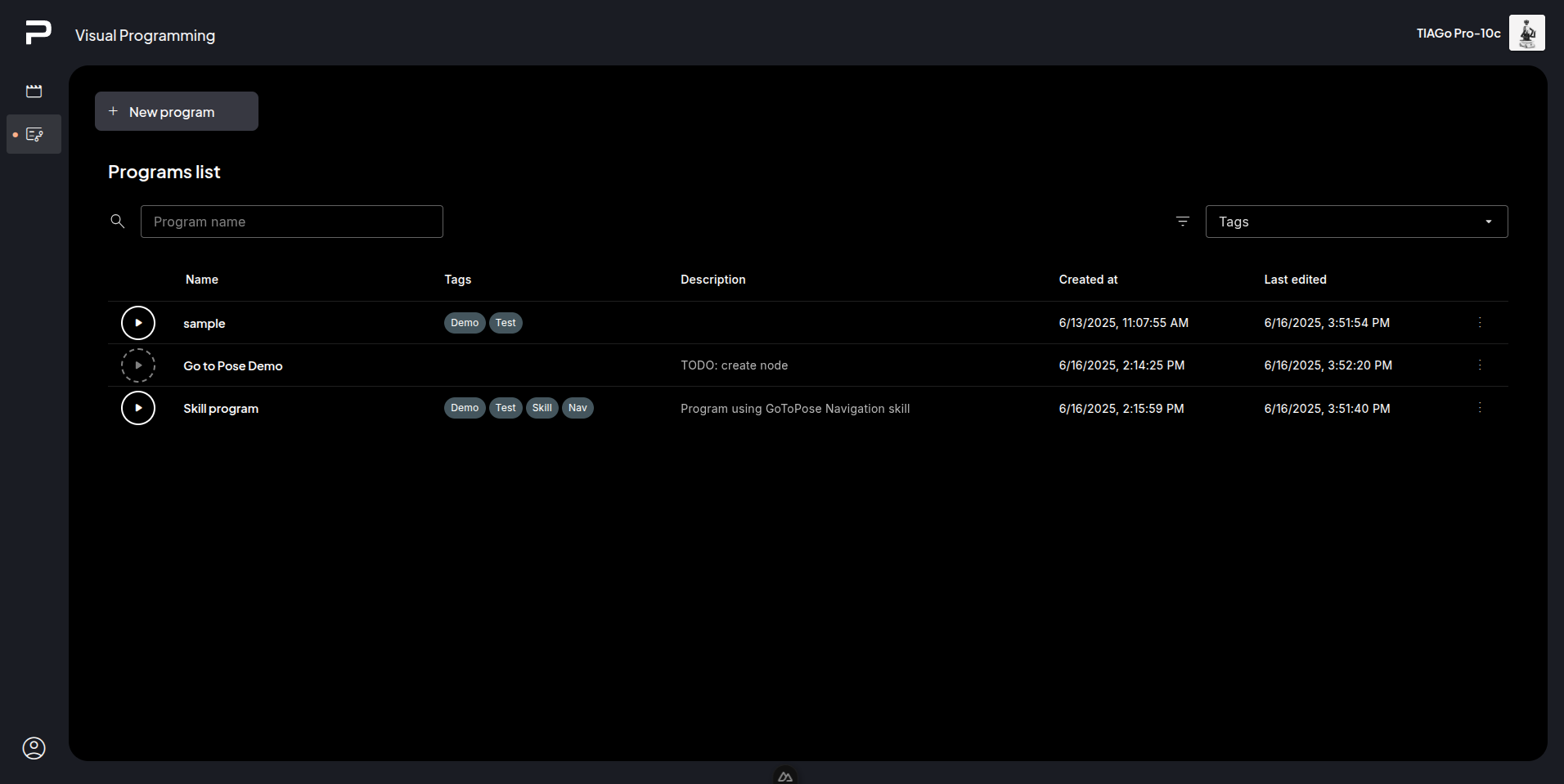
Programs list¶
Filter bar
Filter the list by the program name, or the tags assigned to the programs.
List
Each list item shows, from left to right:

Clicking the starts the program. The
appears to
stop execution. While a program is running, other programs are disabled.
If the play button has a dashed border and is disabled , the
program’s graph is incomplete and cannot be executed.
Click the program name to open it in the editor.
Programs can be tagged to group or filter them.
A description can be added to each program.
Each program has a created date, and if a program has been updated it will also display a “Last edited”.
Clicking on the three dots opens the context menu for that program to:
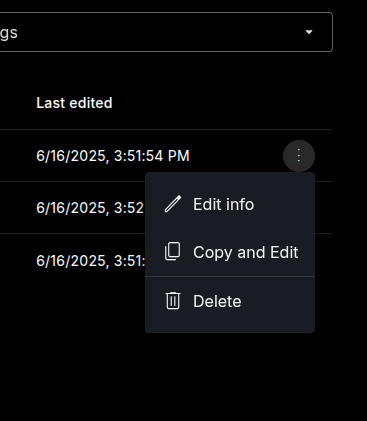
Edit information (name, tags, and description), opens a popup with the different fields to be edited.
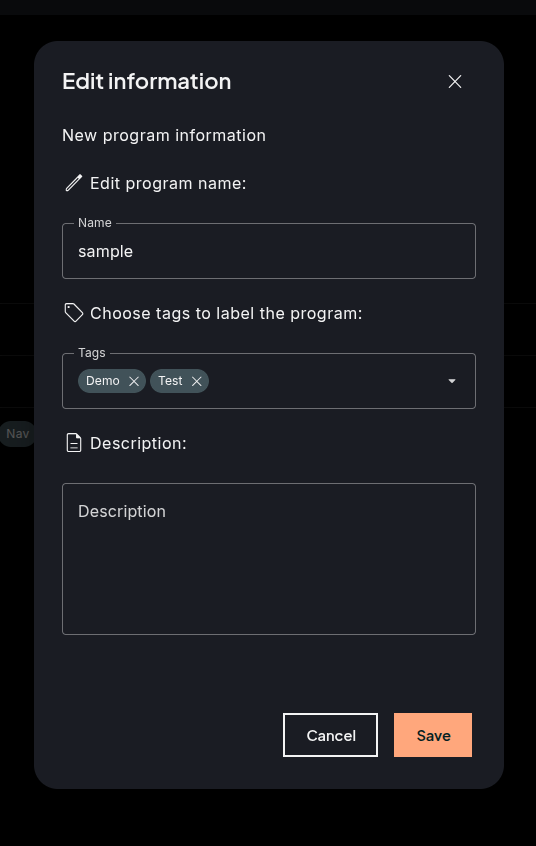
Copy and edit, use the existing program data to create another program. It opens the editor.
Delete, clicking it will open a prompt to confirm deletion. This action is irreversible.
Editor¶
The visual programming editor allows the editing of a program’s graph structure via nodes, connections, and properties.
The UI of th editor is divided into the following part:
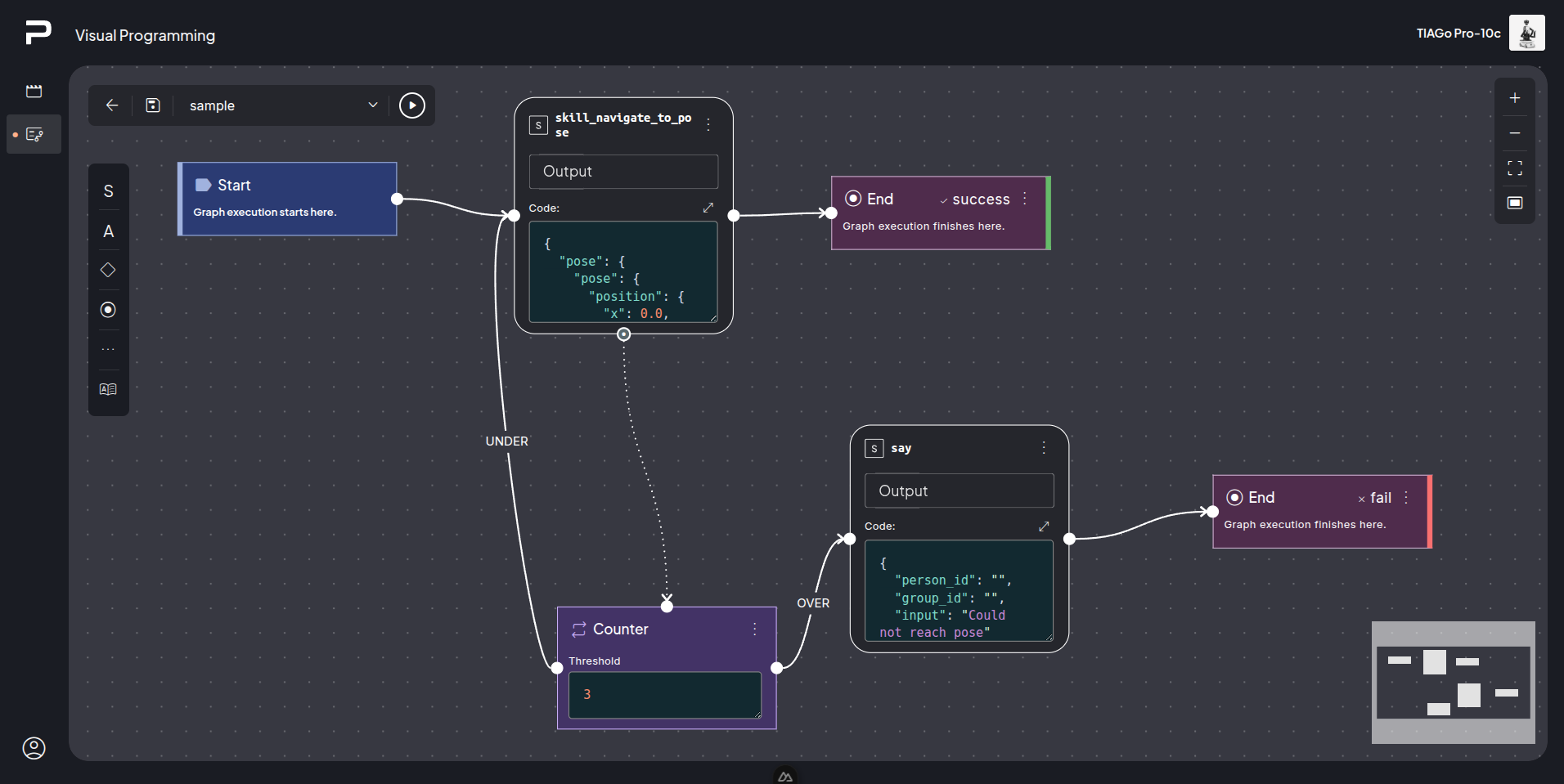
Top left panel¶

The top left panel has a back button, which goes back to the programs list page. It opens a prompt before if there are some unsaved changes to confirm exiting.
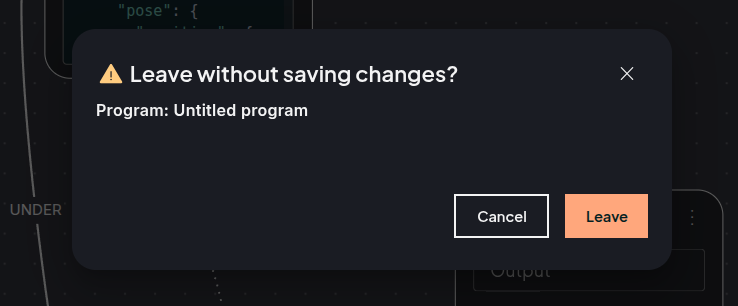
Save button to save the changes, the save button icon will display a small colored circle if there are any unsaved changes.
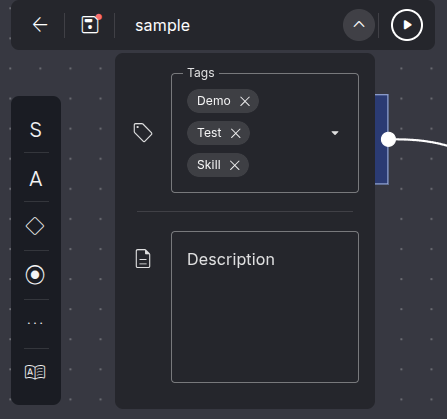
Field with the program name, and a collapsable menu to edit tags and description.
Finally, the play button to run the program on the editor.
Top right controls panel¶

This panel contains options to control the workspace visualization, such as zooming in and out, fitting the graph into view, and taking a screenshot of the editor, which is automatically downloaded as an image.
Editor workspace¶
Interaction with the editor workspace.
The mouse wheel can be used to zoom in and out
Click on the editor and drag to move around the workspace
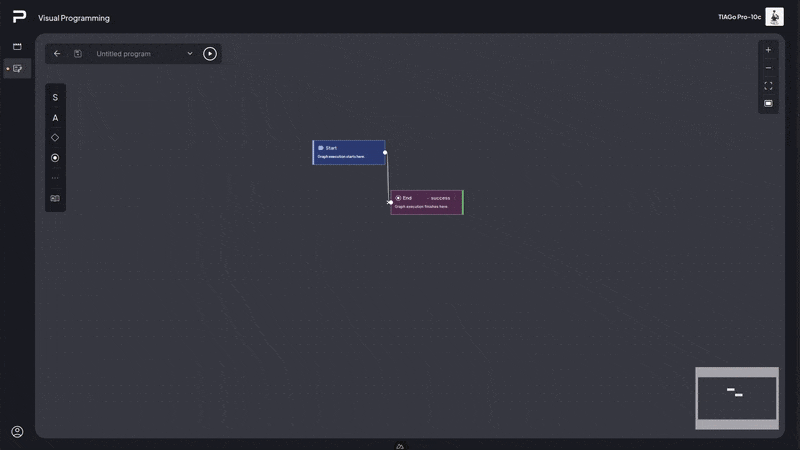
Click on a node in the workspace and drag it to move it around
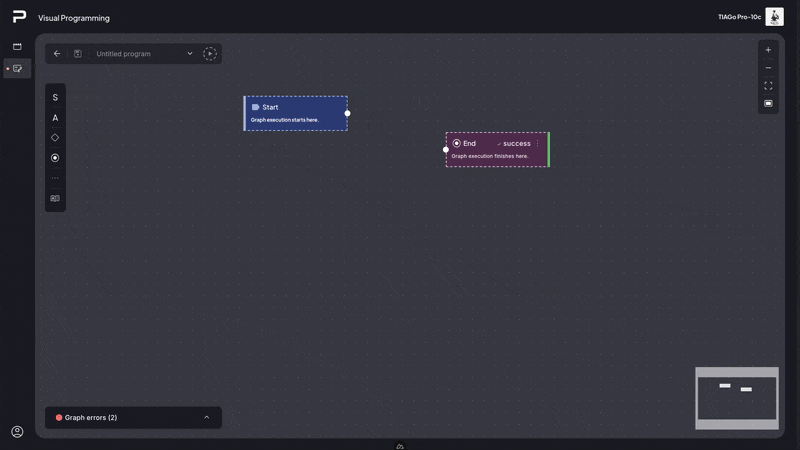
Click on the context menu of a node, all nodes will show an option to delete the node. Nodes can also be deleted by clicking on the node to select and then pressing Backspace key or Delete button. Executor node types will also show an option to ignore or handle failure. If handle failure is used it will show an error edge source handle which can be connected to another node in case the node execution fails.
Add nodes to the graph by opening the nodes menu and dragging on from there or click on the node from the menu and it will appear in the middle of the editor.
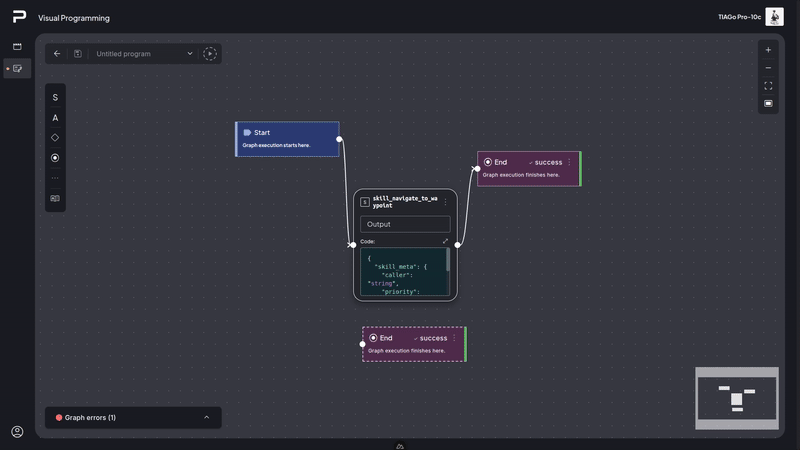
Click on a source edge handle and drag to connect to an input edge handle.
Click on an existing edge to select it, this will open a context menu for edge where it has an option to delete the edge, or use the Backspace key or Delete button to remove the edge.
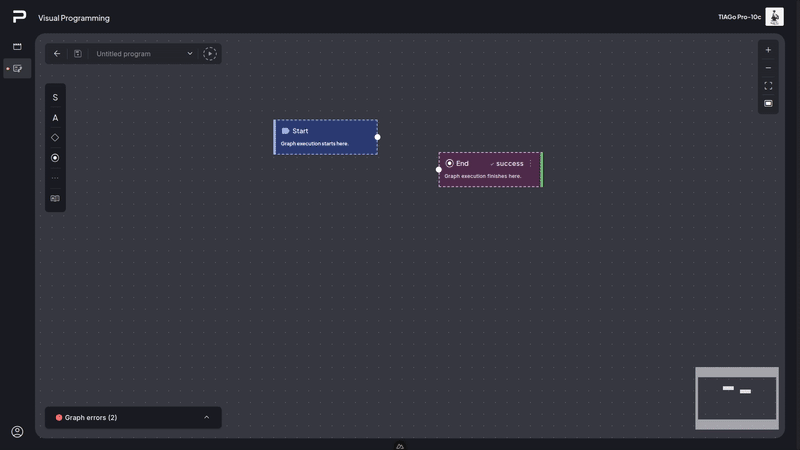
Hold down the Shift key, click and move the mouse to perform a multiselect of nodes where they can be all deleted, or moved around.
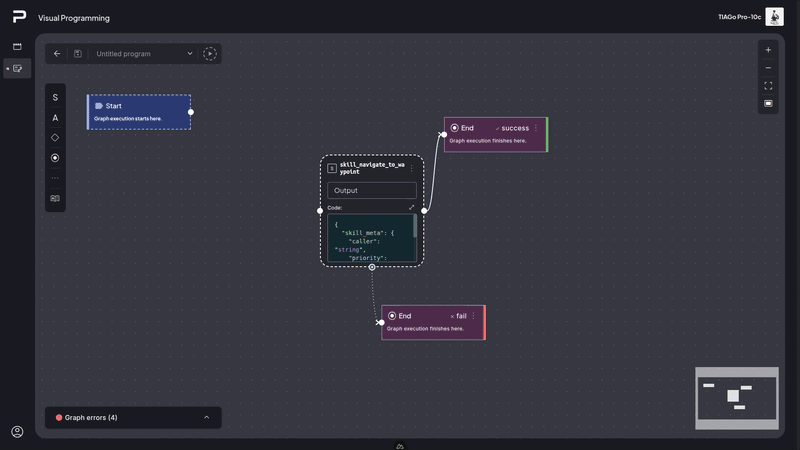
Graph errors panel¶
In case there are some errors in the graph, all of them will be displayed in the graph error panel at bottom left of the editor.
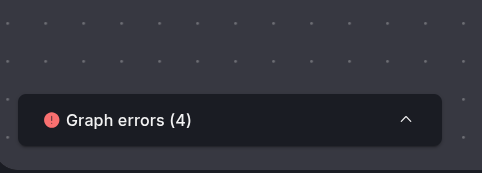
Collapsed graph error panel¶
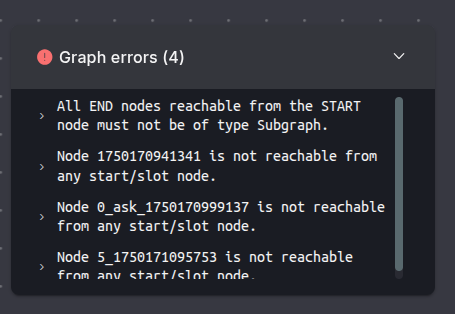
Expanded graph error panel¶
Minimap¶
Shows a minimap of the graph, it is located at the bottom right corner of the editor.
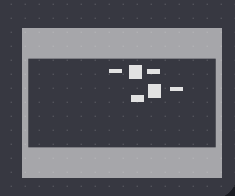
Rules for graphs¶
For a created visual programming to be playable it needs to meet certain requirements:
All nodes except End Nodes must point to another node.
All nodes except Start and Slot nodes must be pointed by another node or nodes.
All Nodes except IF nodes or Counter nodes must point to a Node that is not their ancestor.
In the case of IF and Counter nodes, the False or Under edge can be connected to an ancestor node to create a loop.
A graph can only have one Start node.
All End nodes that can be reached from the Start Node must finish the program, either with success or failure.
A graph must emit all signals that are used either in Slot nodes or in Wait for Signal nodes.
All emitted signals must be reacted to by either a Slot node, or a Wait for Signal node.

